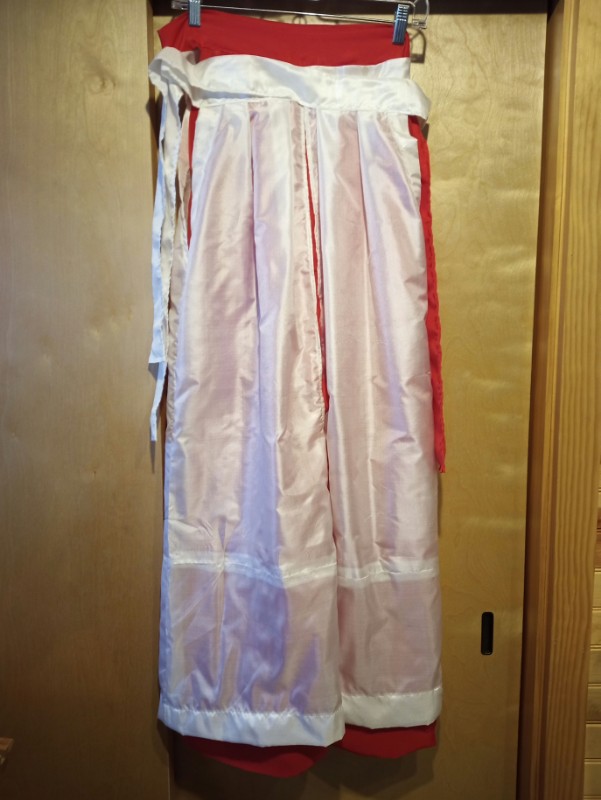Back in 2018, when I was being elevated to the Order of the Laurel in the SCA, Sharon made some parts of a Sokutai Sugata for me to wear as my elevation garb. She made the two most important upper-body garments, the houeki no hou outer robe and the shitagasane middle-layer robe with its long kyo tail. I made or purchased many of the accessories for the garment such as the kanmuri headgear, sekitai belt of stones, shaku baton, and hirao belt. However, the lower-body garments and some accessories were substituted with less-formal items because we ran out of time.
To prepare for her elevation next month, I decided to make at leat two of the missing items, which had been on my to-do list for some time. I made the uenohakama out pants, and the oguchi lining pants.

Most of the time, when you see the uenohakama, they are lined and appear to be both of these garments in one. The lined uenohakama are for winter wear. These are for summer wear and are unlined. uenohkama are made very differently from regular hakama. They open in the front, and they only have one long waist tie that connects the front and back at the sides. The tie is arranged so that it can be knotted at the right hip, and there is a fly strip that covers the opening at the front.
The oguchi are supposed to be a bit longer so that the hems are visible sticking out from beneath the hems of the uenohakama. I wound up making mine about the same length as the uenohakama, so I sewed on an extra bit at the bottom to add weight and appear as a hem. The oguchi also only have one tie, and it is arranged to tie at the left hip.
Layered together, the two garments look like this, though you’ll have to wait until after Hara’s elevation to see what they look like as part of the outfit.



















